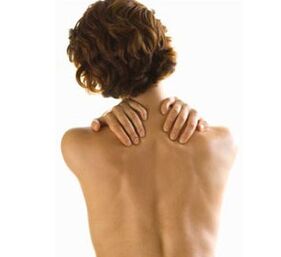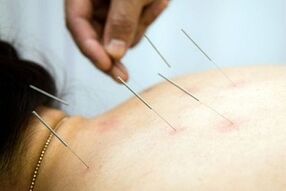Probably after the age of 30-35, some people experience discomfort and pain in various areas of the back, temporary numbness of the legs or arms.Such manifestations may indicate the possibility of developing osteochondrosis.This disease is quite common and under the influence of various reasons, the cartilage tissue of the spine begins to lose its mobility and comfort.This disease can develop in any part of the spine, but it usually affects the discs between the vertebrae.If you move a little at work or sit for a long time, the possibility of developing osteochondrosis is very high.

People notice anxiety and other changes associated with this disease, usually approaching the second half of life.
The chance of getting the disease increases significantly.
- You already know what age-related changes are;
- You've recovered from back injuries;
- You had to go through extreme physical exertion;
- You are constantly in stressful situations;
- Your work involves strong vibrations.
In the last few decades, osteochondrosis of the spine has also become noticeably "younger".
Early onset of the disease is possible:
- The person has poor physical fitness or poor posture;
- A person eats untimely or incorrectly;
- suffers from straight legs or curvature of the spine;
- The person has bad habits - overeating or smoking.
In addition, during pregnancy, the load on the spine increases, so it is the cause of osteochondrosis in girls and women.
The danger of osteochondrosis
How to deal with osteochondrosis?In the early stages of osteochondrosis (first or second), symptoms may be poorly expressed or may not be bothersome at all.This is dangerous, because advanced osteochondrosis, in addition to discomfort and pain, "give" complications in the form of such serious diseases as intervertebral hernia.
What to do with osteochondrosis?- treat, because if osteochondrosis is detected in the early stages, then you can get rid of it completely.
Modern methods used in the treatment of osteochondrosis
In the complete treatment of spinal osteochondrosis, two methods are used: complex therapy (conservative) and surgical intervention.
Complex therapy (conservative)

Therapy for osteochondrosis consists of a number of drugs and additional methods.This therapy is prescribed if you are in the early stages of this disease.
Class 1 osteochondrosis is treated:
- use of drug therapy;
- local and general massage;
- a series of physical therapy exercises;
- using reflexology and all different physiotherapy methods.
Treatment of osteochondrosis of the 2nd class additionally requires the use of the spinal traction method.Spinal traction is performed using a load selected individually for each patient.Special equipment is used for this.The spinal traction procedure not only relieves acute pain, but also restores the correct position of your spine and increases the intervertebral space.
Medicinal methods
- the use of various anti-inflammatory and pain relievers;
- the use of modern drugs that restore cartilage tissue.
Methods of using drugs during drug treatment:
- All kinds of external rubs and compresses.
- oral administration of tablets and capsules.
- Procedures such as IVs and injections.
With drug treatment of osteochondrosis, pain is relieved, acute inflammation is relieved, muscle tissue gradually relaxes, some affected cartilage is restored, blood supply and metabolic processes increase.Such treatment of the disease is definitely determined in cases of exacerbation of the disease.
Additional methods

- Specially developed therapeutic diet;
- massage and self-massage;
- Physiotherapy methods;
- manual therapy;
- light underwater hydromassage;
- traction (traction therapy);
- Acupuncture;
- Traditional medicine;
- meditative relaxation;
- medicinal baths;
- a series of physical therapy exercises;
- work with a psychotherapist.
Surgical treatment (operative)
Surgical treatment is used in the later stages of the disease (third and fourth), when other attempts no longer help.The treatment of the later stages is more complicated, because the main diseases themselves are accompanied by other diseases of the spine - radiculitis, hernias.An indication for surgical intervention is the appearance of an intervertebral hernia.Sometimes it is necessary to erase the affected disk completely.
Treatment of grade 4 osteochondrosis requires an extremely complex operation with a high risk of damage to the nerves of the spinal cord.Therefore, surgical treatment is performed extremely rarely in cases of attempts to treat a patient with osteochondrosis by other means.
How long does the treatment of osteochondrosis take?
How to treat osteochondrosis quickly?This depends on the presence of age-related changes, variability in the manifestation of symptoms and the variety of different treatment methods used.The patient himself can actively help his recovery by carefully following the requirements of his treating therapist.
Treatment of class 1 osteochondrosis usually lasts from one to four months.In class 4, the recovery period after surgery can take a year and a half to a year and a half.Treatment also depends on the personality of the patient.He is required to be positive, persistent, strong-willed and highly motivated.
Treatment of various types of osteochondrosis
Osteochondrosis differs by the location (location) of the spinal lesion.Localization of osteochondrosis can be:
- cervical;
- chest;
- lumbar;
- is widespread.
Main complaints:
- With cervical localization - a person periodically experiences pain in the shoulders and arms, as well as headaches.Due to compression of the arteries, sometimes there is noise in the ears, colored spots and "floaters" in front of the eyes, and slight dizziness.
- With thoracic localization - a person complains of pain of the type: "A stake was inserted into the chest", "shots" in the heart, stomach or lungs.
- With lumbosacral localization - a person complains of severe back pain, which can spread to the groin, groin and even legs.Some patients experience numbness in the leg muscles.
- With widespread localization, complaints arise about a large number of symptoms.With this form of the disease, a person complains of several types of symptoms at the same time.
How to treat cervical osteochondrosis?
Treatment methods for cervical osteochondrosis today:
- pain relievers, anti-inflammatory drugs, antispasmodics;
- stimulants for tissue regeneration, anti-inflammatory gels, ointments for external use;
- manual therapy;
- exercise therapy;
- hirudotherapy;
- reflexology;
- Traditional medicine;
- surgical intervention when the case is particularly severe.
How to treat thoracic osteochondrosis?
Measures for the treatment of breast type:
- pain relievers and anti-inflammatory drugs;
- Acupuncture;
- hand effect;
- vacuum therapy;
- Physiotherapy;
- massage massage;
- Traditional medicine;
- Moxotherapy (warming with wormwood cigars).
Therapy for the chest type of chest disease is used not only for general therapy, but also as a way to create a muscle corset;Among other things, exercise therapy prevents possible relapse.
How to treat lumbosacral osteochondrosis?

At different stages, therapy is carried out conservatively and surgically.
Conservative treatment of lumbosacral osteochondrosis in the early stages includes:
- drug therapy, in some cases hormones;
- hand effect;
- General health supplements;
- reflexology (acupuncture);
- lower back massage;
- Traditional medicine;
- hirudotherapy (leeches);
- Exercise therapy.
Stage 4 lumbosacral osteochondrosis usually requires surgical intervention.
How to treat general osteochondrosis?
General osteochondrosis is treated:
- To prescribe appropriate drug treatment;
- using any kind of manual therapy;
- physical therapy exercises;
- use of acupuncture methods;
- Different methods of physiotherapy;
- development of a special diet.
Any spinal osteochondrosis requires surgical intervention in only ten percent of cases.It can be determined for patients with surgical complications, as well as if the patient turns to specialists for treatment.If the diagnosis is made on time and you have already started therapy, traditional methods of traditional treatment of this disease will be wonderful if they are added to traditional methods.Traditional methods have proven themselves in the treatment of any osteochondrosis.
Traditional treatment
Folk remedies for this disease are used only in combination with drug treatment.They aim to reduce inflammation, pain and discomfort.Decide for yourself how to treat spinal osteochondrosis - using various traditional medicine or only medical methods.

Popular folk remedies:
- taking tonic candle baths;
- applying copper plates and coins to the spine.
- Compressed by adding aloe juice;
- Massage with honey, honey wraps;
- Fresh streams of herbs: Oregano, Hop cones and Chamomile;St. John's Wort, Dandelion and Burdock roots;
- Apply horseradish leaves to the sore spot;
- applying rye or potato cakes to the sore spot;
- Sunflower herbal tea;
- Tincture of Red Elderberry;
- Burdock compresses.
When you start treatment for osteochondrosis, you may find that your pain will only intensify.This is a completely expected reaction of your body to unusual influences.Soon such pain will stop completely.The best way to treat osteochondrosis is a combination of conservative therapy with postoperative rehabilitation in specialized centers.
How can a person get rid of osteochondrosis?
Here are the three most common questions for patients with osteochondrosis:
- How to get rid of osteochondrosis?
- How to treat osteochondrosis quickly?
- Where is the best place to treat osteochondrosis?
Doctors answer these questions differently, because the speed of recovery is not only in the form of the disease, but not in the time of the patient seeking treatment.
Specialists can guarantee complete treatment only for the first and second stages of the disease.Therefore, if you have discovered some symptoms, you should immediately contact a therapist.Although all modern methods of osteochondrosis are quite effective, doctors consider some of the most effective therapy of traditional methods, which are constant exercises on stationary equipment for rehabilitation.This treatment helps to completely rebuild the muscle corset and forget about the disease for a long time.
Why should a patient with osteochondrosis not be treated at home?
- A special orthopedic bed, physiotherapy equipment and special exercise equipment, physiotherapy equipment and special exercise equipment are not recommended for a patient to be treated at home, as they cannot greatly reduce the effectiveness of treatment;
- Each patient must constantly follow a daily diary, take prescribed medications on time, eat according to a diet or undergo all medical procedures.In addition, many patients need periodic reminders to continue treatment.
- At home, it is difficult to follow the correct diet recommended by a nutritionist.
So, the conclusion: To treat osteochondrosis at home, using traditional methods of traditional treatment, the best solution will be to go to a special clinic or hospital for this profile, which is always under the supervision of a highly qualified therapist.



















